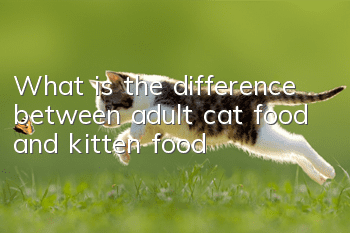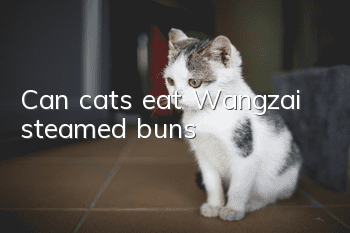What is the difference between adult cat food and kitten food?

What is the difference between kitten cat food and adult cat food? Can kittens eat adult cat food? Commercial foods for adult cats currently on the market are basically acidified foods. The so-called acidified food means that cats excrete acidic urine after feeding it, that is, the urine pH value is 6-6.5. Clinically, it has been found that adult cats, especially those between 3 and 10 years old, are most likely to develop magnesium ammonium phosphate (struvite) urinary stones, which account for more than 90% of cat urinary stones. Eating acidified foods to maintain urine pH 6-6.5 can effectively prevent the development of magnesium ammonium phosphate urinary stones. Acidified foods are foods that use large amounts of animal protein, plus phosphoric acid and ammonium chloride. Animal protein is rich in sulfur reactive acids, such as methionine, etc. These reactive acids can produce sulfuric acid in the cat's body and are then excreted in the urine.
During the growth period, young cats have some special requirements for food. In addition to essential nutrients, they also need to take in energy and some substances that help their body organs grow. Young cats require four times more energy per kilogram of body weight than adult cats. Young cats eat more protein than adult cats, and it needs to contain the amino acids they need for growth. They also need appropriate amounts of vitamins and minerals to ensure healthy growth of teeth and bones. So young cats have to eat a lot of food. And its stomach capacity is still relatively small. In order to meet its nutritional needs, it is best to eat more meals less. In order to meet the nutritional needs of rapidly growing young cats, the food fed should also meet non-listed standards. The ideal food should be highly nutritious so that young cats get the nutrients they need in small amounts. The food should also be easily digestible to ensure that the nutrients in it are fully absorbed by the young cat. Obviously, the food should also be nutritionally balanced to meet the special needs of the young cat, and it should be palatable so that the young cat will eat it. Designing a nutritionally balanced diet is a complex endeavor. Thankfully, feeding young cats is no longer that complicated. The expertise of nutritionists and veterinarians has developed kitten food that meets the special needs of young cats. This kind of food is finely processed, delicious and economical, making it an ideal cat food.
Overly acidified cat food with a pH value below 6 can cause excessive loss of potassium and calcium from the urine, which is detrimental to the health of the cat. Young cats mainly feed on milk, which can produce acidic urine in their bodies. If young cats eat acidified food, it will hinder the healthy growth and development of their bones. This is why young cats cannot feed adult cats commercial food. One of the reasons. Pregnant and lactating female cats should not be fed acidified food because acidified food can hinder the healthy development of the fetus or kittens. Elderly cats over ten years old are prone to form oxalate urinary stones. Oxalate urinary stones are formed in an acidic urine environment. Feeding acidified food will increase the risk of urinary stones in older cats. Therefore, elderly cats should not be fed acidified food. Overseas, in recent years, an increase in oxalate urinary stones has been found in non-elderly cats, which may be related to the popularization of acidified foods in adult cats, especially those foods that make the pH value of urine lower than 6.
- Can cats really get rid of hair balls by taking hair removal cream?
- What do novice cat owners need to prepare?
- Can you beat a cat if it disobeys? This will make the cat more afraid of you.
- How to tell if your cat has gastroenteritis
- How to train a cat to stand up and catch food? Cat skill training!
- What should I do if my cat keeps sticking out its tongue when it's hot?
- The pet funeral industry is experiencing explosive growth: treat pets well and say goodbye with dignity!
- Which kind of cat is not suitable for humans to keep? Cat breeds!
- Should cats be kept in cages when sleeping? This is actually "chronic cat abuse"
- Chinchilla Cat Personality and Feeding Instructions



